Adolph Alexander Weinman designed the Mercury dime, also called the Winged Liberty Head dime, which replaced the Barber (or Liberty Head) dime created by Charles E. Barber and introduced in 1892.
The Mercury dime type was in circulation from 1916 to 1945; none were produced in 1932 or 1933, and most of the issues from 1916 to 1931 proved far scarcer than those from 1934 on.
What Is the 1936 Mercury Dime Made Of?
The Mercury dime pieces minted between 1941 and 1945, undoubtedly the most prolific period for this series in terms of overall mintages and availability of samples in the Gem Mint State grades, will typically be the least expensive type representatives from the Mercury dime.
Many typeset collectors prefer samples from the earliest years of the Mercury dime period, when many important key and semi-key issues, such as the 1916 D, 1921 P, and 1921 D, were published, even though the least expensive issues are from the series’ last years. Other dates, such as several branch-mint issues from the teens and ‘20s, are used as conditional keys and semi-keys.
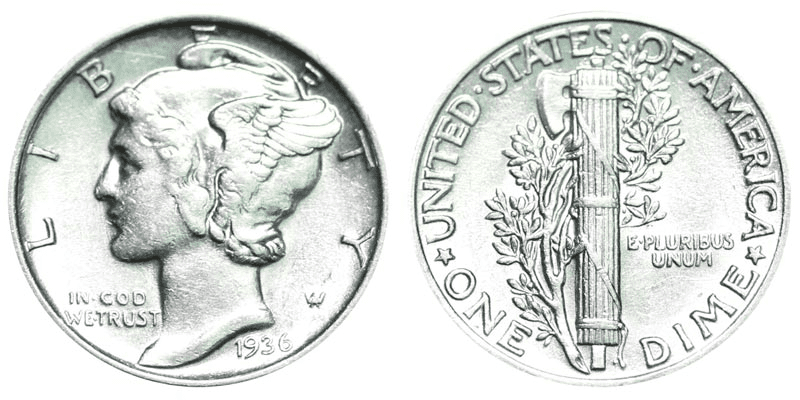
The image of Winged Liberty, or Mercury (the Roman god of commerce), faces left and has the word LIBERTY all around it. The year of minting is positioned immediately below the bust at around 5 o’clock, and IN GOD WE TRUST is displayed left of the neck. The designer’s initials AW can be seen to the right of the neck.
An axe head and olive branches are positioned vertically in the center of a huge torch. Around the edge is written UNITED STATES OF AMERICA (above) and ONE DIME (below). If there is a mint mark, it can be seen around the torch’s left bottom rim.
1936 Mercury Dime Varieties
Here are the Mercury dime varieties minted in 1936:
| Variety | Mint Location | Mintage |
| 1936 D Mercury Dime | Denver | 16,132,000 |
| 1936 S Mercury Dime | San Francisco | 9,210,000 |
| 1936 P Mercury Dime | Philadelphia | 87,500,000 |
| 1936 Proof Mercury Dime | Philadelphia | 4,130 |
| Total | 112,846,130 |
1936 D Winged Liberty Head (Mercury) Dime
Year of minting: 1936
Mint Mark: D
Place of minting: Denver
Quantity produced: 16,132,000
Face Value: $0.10 (10 cents)
Price: $2.18 to $17.00 (circulated condition)
Mass: 2.50 grams
Edge: Reeded
Designer: Adolph Alexander Weinman
Composition: 90% silver and 10% copper
Diameter: 17.90 millimeters
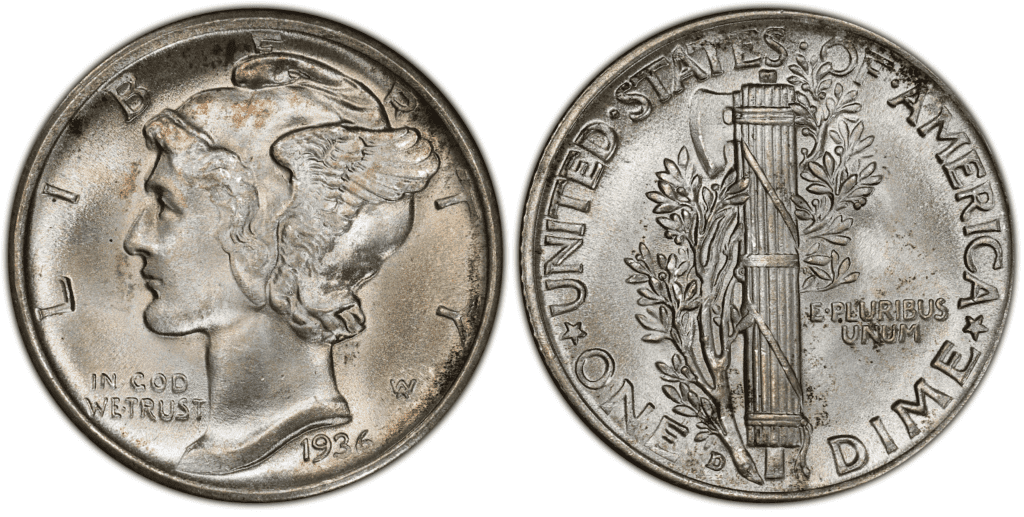
This Denver mint dime is a common coin in every way, even in the Gem grades. Numerous uncirculated specimens exhibit wonderful horizontal band features, fantastic shine, and general eye appeal. This issue is easily discovered in MS67 levels with Full Bands details.
Through MS66, you can reasonably access this issue. While most coins have imperfections in their centers or peripheries, there are enough verified FB examples to satisfy sophisticated collectors.
Uneven die polishing lines added to remove collision marks or die erosion can occasionally be seen on a 1936 D Mercury dime. A modest doubled-die obverse and several repunched mintmarks are among the variations, most of which are insignificant and not of general interest.
1936 S Winged Liberty Head (Mercury) Dime
Year of minting: 1936
Mint Mark: S
Place of minting: San Francisco
Quantity produced: 9,210,000
Face Value: $0.10 (10 cents)
Price: $2.18 to $14.00 (circulated condition)
Mass: 2.50 grams
Edge: Reeded
Designer: Adolph Alexander Weinman
Composition: 90% silver and 10% copper
Diameter: 17.90 millimeters
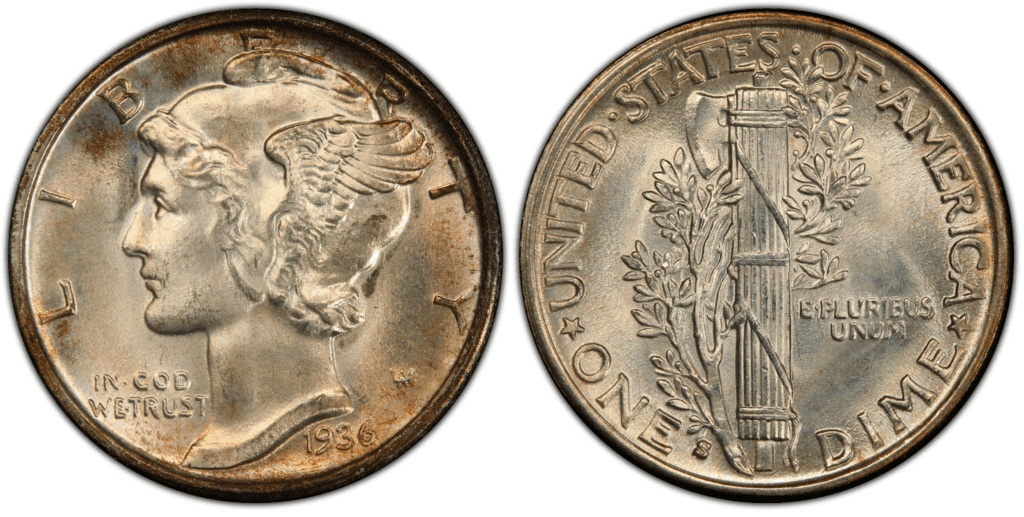
The 1936-S dime is very prevalent in all grades up to MS67. Many people had exceptional details, contributing to a disproportionately high percentage of Full Bands’ survival, even at the Gem grades.
Collectors have numerous options to be selective and choose a top-grade sample with exceptional strike, color, and shine, much like many other Mercury dimes minted in the mid-1930s.
When they were first produced, 1936 S Mercury dimes were saved in large quantities, and they continued to be accessible in rolls until the 1980s, when the introduction of certified grading caused these rolls to be split up for the best examples.
Due to rigorous die polishing, this issue often has a high luster and may even be semi-proof-like. A run of beautiful coins would follow from doing this carefully.
Careless work would result in the coins’ many irregular lines and haphazard dazzling areas. Most frequently, the latter is visible just to the left and right of Liberty’s image.
1936 P Winged Liberty Head (Mercury) Dime
Year of minting: 1936
Mint Mark: no mint mark
Place of minting: Philadelphia
Quantity produced: 87,500,000
Face Value: $0.10 (10 cents)
Price: $2.18 to $6.80 (circulated condition)
Mass: 2.50 grams
Edge: Reeded
Designer: Adolph Alexander Weinman
Composition: 90% silver and 10% copper
Diameter: 17.90 millimeters
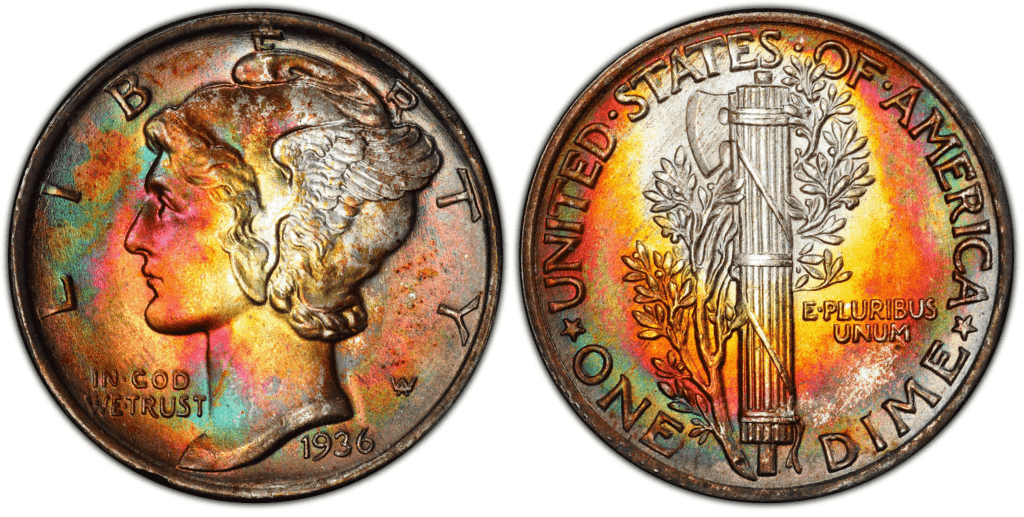
Mercury dimes from the 1936 Philadelphia Mint are prevalent in all circulated grades and even reach the Gem range. Since American numismatists became interested in collecting Mercury dimes by year and mintmark, many collectors conserved these pieces.
The 1936 Philadelphia Mercury dime was well-struck, and most uncirculated examples show Full Bands features.
This high mintage symbolizes the optimism of the New Deal period, which was unthinkable only a few years ago. There are plenty of 1936 P Mercury dimes in all grades up to MS67, and enough of them exhibit Full Bands that this feature is not an obstacle to finding an appropriate piece.
No fewer than eight known doubled-die obverse variations are due to the substantial number of dies needed for such manufacture. The majority of these modifications are rather minor, yet they all have some impact on the date and motto IN GOD WE TRUST. The more desired of these get VarietyPlus certification from NGC.
1936 Proof Winged Liberty Head (Mercury) Dime
Year of minting: 1936
Mint Mark: no mint mark
Place of minting: Philadelphia
Quantity produced: 4,130
Face Value: $0.10 (10 cents)
Price: $276 (circulated condition)
Mass: 2.50 grams
Edge: Reeded
Designer: Adolph Alexander Weinman
Composition: 90% silver and 10% copper
Diameter: 17.90 millimeters
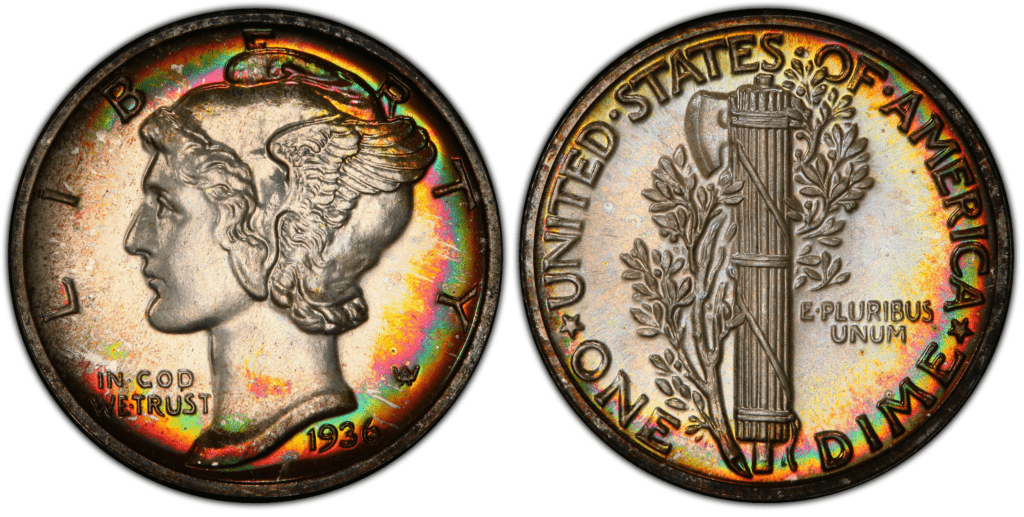
Unlike the penny and nickel proofs from 1936, created in two different finishes (Satin Finish and Brilliant Finish), the 1936 Proof Mercury Dimes were only made in a Brilliant finish.
Here are some of the 1936 Mercury dime proof coins existing today, according to Jaime Hernandez of the Professional Coin Grading Service (PCGS):
- PR60-63: These coins were probably improperly cleaned or stored, and there may be several hundred examples.
- PR64-65: The majority of 1936 Proof Mercury dimes are in condition PR64-65. These two grades together make up perhaps half of the mintage.
- PR66: It is becoming more difficult to locate coins available in this grade in PR66 condition. There may only be 400 coins left in this grade.
- PR67: It gets much harder to discover these coins in PR67, and there are possibly just 100 specimens in this grade. Very few copies in PR67 condition come up for sale yearly (no more than 3 to 5 coins a year). Therefore, it truly pays to be patient when looking for one in this grade.
- PR68: The single sample rated by PCGS in this grade, with none finer, is the highest grade that is currently available.
List Of 1936 Mercury Dime Errors
Curved Clip Error
A curved clip is produced when a punch (blanking die) overlaps a previously punched hole in the coin metal strip. The resultant blank has a deficit that is concave. This planchet defect is thought to result from the coin metal strip failing to advance correctly through the blanking press.
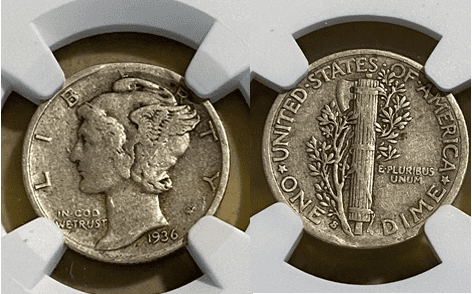
Doubled Die Error
Doubling occurs when the coin’s design is struck twice, or even three times, but at slightly different angles each time. Even the few 1936 doubled die dime errors that exist are worth collecting because they rarely leave a lasting impression.
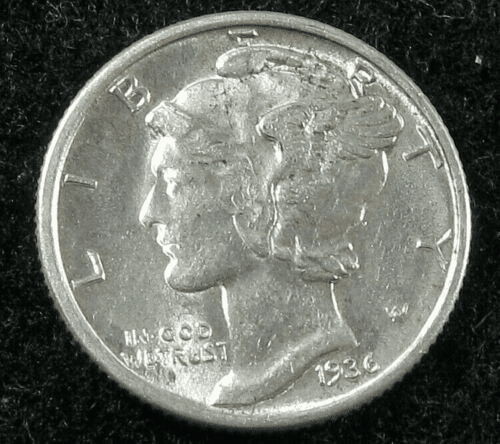
How Much Is The 1936 Mercury Dime Worth Today?
The NGC Price Guide on their website set the 1936 Walking Liberty (Mercury) dime’s melt value at $1.71 (January 2023). It has a face value of $0.10 or ten cents.
According to the USA Coin Book, the 1936 Mercury dime is valued at $2.75 in average condition. However, buy or sell these coins in pristine, uncirculated condition on the open market. You can make up to $63, $40, and $12 to $35 for the Denver, San Francisco, and Philadelphia variants. Proof coins can be priced for as high as $1,594.
How Does The Grading System Work?
A magnifying glass or even a coin microscope are common instruments coin appraisers use to assess a coin’s worth and condition. To determine a coin’s size, they examine its brilliance, strike, color, preservation, attractiveness, and other features.
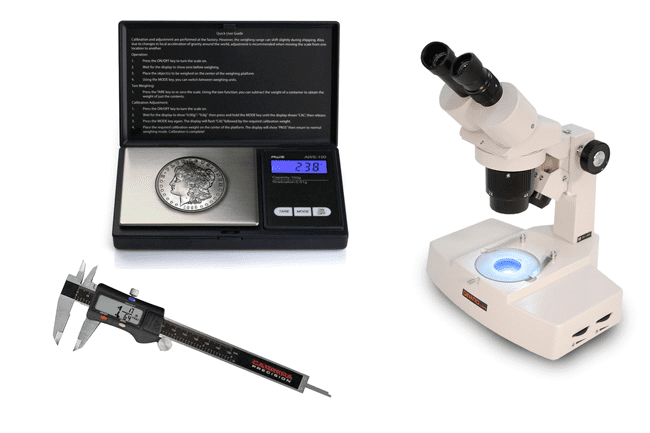
You can contact businesses like the Numismatic Guaranty Corporation (NGC) or the Professional Coin Grading Service (PCGS) if you need the assistance of professionals from the coin grading industry. Your coin can receive an official grade from them, and your coin’s value might drastically increase as a result.
These experts use instruments and the Sheldon Scale, a 70-point grading system that determines the grade of a coin. You may quickly assign your coin to the PR (Proof) or MS (Mint State) categories using this scale.
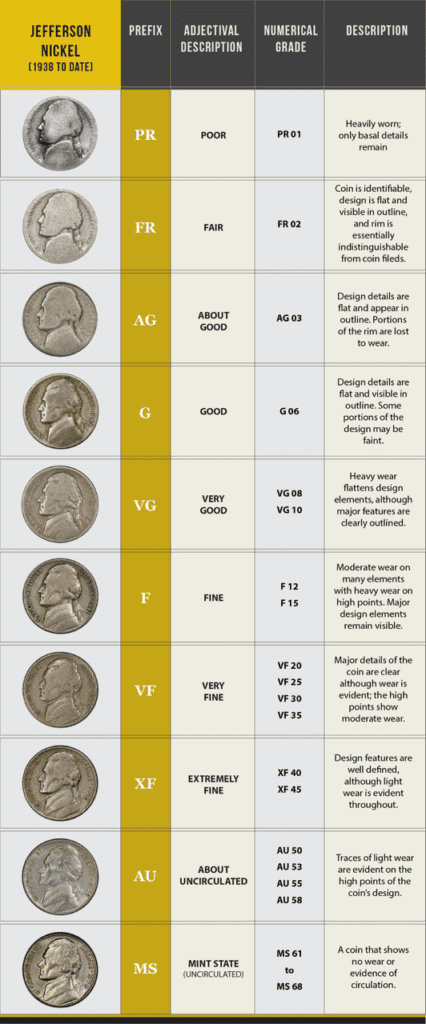
MS denotes a grade of 60 to 70 on the scale for your coin. This suggests that you would need a coin microscope to see any faults or imperfections in your coin.
Where To Buy Or Sell 1936 Mercury Dime?
You might be able to find a 1936 Mercury dime in a coin or antique shop, although it is more challenging to find one there. But because of technology, it is now feasible to look for places online to quickly purchase these coins. Check for online markets and auction sites, including Amazon, eBay, Etsy, or Craigslist, to search for 1936 Mercury dimes. You might even get lucky and find a dealer selling a rare one there!
Suppose you want to be assured about your purchases. In that case, you may also seek advice from experts in coin grading services like the Numismatic Guaranty Company (NGC) or the Professional Coin Grading Service (PCGS). You may get information from these organizations on how to buy or sell your 1936 Winged Liberty Head (Mercury) dimes.
FAQs
Where is the mint mark on a 1936 Mercury dime?
If there is a mint mark on a 1936 Winged Liberty (Mercury) dime, it can be seen around the torch’s left bottom rim on the coin’s reverse. The coins minted in Denver bear the “D” mint mark. In the same way, the coins minted in San Francisco bear the “S” mint mark. On the other hand, the coins minted in Philadelphia do not bear any mint marks.
How much silver is in a 1936 Mercury dime?
The 1936 Winged Liberty Head (Mercury) dime has a metal composition of 90% Silver and 10% Copper.
What is a 1936 Winged Mercury dime worth?
At the time of this writing, the NGC Price Guide on their website set the 1936 Walking Liberty (Mercury) dime’s melt value at $1.71. It has a face value of $0.10 or ten cents. Proof coins can be priced for as high as $1,594. According to the USA Coin Book, the 1936 Mercury dime is valued at $2.75 in average condition. However, buy or sell these coins in pristine, uncirculated condition on the open market. You can make up to $63, $40, and $12 to $35 for the Denver, San Francisco, and Philadelphia variants.
